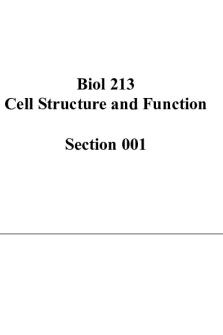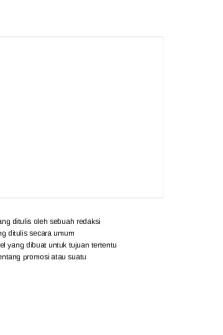Thermal and Fluid Engineering - Lecture- Power Point slides - 01 PDF

| Title | Thermal and Fluid Engineering - Lecture- Power Point slides - 01 |
|---|---|
| Course | Thermal and Fluid Engineering |
| Institution | Western Sydney University |
| Pages | 8 |
| File Size | 352.3 KB |
| File Type | |
| Total Downloads | 20 |
| Total Views | 140 |
Summary
Download Thermal and Fluid Engineering - Lecture- Power Point slides - 01 PDF
Description
ThermalandFluidEngineering Lecture01:LaminarandTurbulentflow
SchoolofComputing,EngineeringandMathematics UniversityofWesternSydney MingZhao Emial:[email protected] Tel.:+61247360085
Viscosity of the fluid μ y
F (force)
Plate
u
Fluid
Δy x
du dy
u – Fluid velocity (m/s) μ – Dynamic viscosity (kg/m·s, N·s/m2) τ – Shear stress (N/m2) ν = μ/ρ, kinematic viscosity (m2/s) ρ – Fluid density (kg/m3) 2
Example 1-1: Engine oil is filled between two flat plates. Surface area of the plate is 20 cm × 20 cm. Thickness of the fluid = 1 cm. The bottom plate is stationary and the top plate moves at a velocity of u=1 cm/s. If the force for moving the top plate is 0.153 N, what is the dynamic viscosity of the oil? If the density of the oil is 980 kg/m3, what is the kinematic viscosity? (Answer: 3.825 N·s/m2, 0.0042 m2/s) y
F=0.153 N u=1cm/s
Plate u
Oil
Δy = 1 cm x
3
Laminar and turbulent flows Laminar flow
• Layers of adjacent fluid slide over each other • Streamlines are parallel to each other and smooth • Flow near wall slower than centre • Example: flow in pipes at small velocity
Turbulent flow
• • • •
Fluid particle paths irregular and chaotic Large scale mixing Flow in radial direction Example: Smoke billowing from chimney, flow in pipe at high speed
4
The velocity scale of the turbulence For a flow in a three-dimensional space, turbulent eddies create fluctuations in velocity, the velocity component in the x-, y- and z-directions are u, v, w, respectively. u mean velocity
u
u
time
The velocity is decomposed as
u (t ) u u(t ) v(t ) v v(t ) w(t ) w w(t )
u ,v , w – mean velocity u, v, w – turbulent fluctuation
5
Features of the turbulence •
Irregularity
•
Diffusivity – mixing of fluid mixtures
•
Mixed length scales of eddies
•
Rotationaligy. Turbulent flows have non-zero vorticity and are characterized by a strong three-dimensional vortex generation mechanism.
•
Dissipation.
If a flow is laminar or turbulent depends on Reynolds number. Reynolds number a measure of the ratio of inertial forces to viscous forces.
6
How to evaluate turbulence The magnitude of the mean velocity
U u 2 v 2 w2 Turbulence energy: the mean kinetic energy per unit mass
k
1 (u ) 2 (v)2 ( w)2 2
Standard derivation of the velocity
1 2 k (u) 2 (v) 2 ( w) 2 3 3
Turbulent intensity
turbulence intensity
U 7
Reynolds number (a) Flow in pipes
U
(b) Flow on a flat plate (boundary layer flow U Turbulent
Laminar
D
UD UD Re U – averaged velocity D – pipe diameter • Re10,000, fully turbulent • 2,300...
Similar Free PDFs

Fundamentals of Thermal - Fluid Sciences
- 1,088 Pages

Power Point Outline
- 1 Pages

Power Point tanya - MEDICINA
- 6 Pages

power point Ascaris lumbricoides
- 19 Pages

Power point chapter 1
- 71 Pages

Power Point 1 Introduction
- 1 Pages

Industrial Fluid Power
- 141 Pages

Power point rematik wita
- 7 Pages

POWER POINT IKATAN KIMIA
- 27 Pages

MODUL MICROSOFT POWER POINT
- 14 Pages

Power point BULLYING
- 7 Pages

Prácticas Power Point
- 2 Pages
Popular Institutions
- Tinajero National High School - Annex
- Politeknik Caltex Riau
- Yokohama City University
- SGT University
- University of Al-Qadisiyah
- Divine Word College of Vigan
- Techniek College Rotterdam
- Universidade de Santiago
- Universiti Teknologi MARA Cawangan Johor Kampus Pasir Gudang
- Poltekkes Kemenkes Yogyakarta
- Baguio City National High School
- Colegio san marcos
- preparatoria uno
- Centro de Bachillerato Tecnológico Industrial y de Servicios No. 107
- Dalian Maritime University
- Quang Trung Secondary School
- Colegio Tecnológico en Informática
- Corporación Regional de Educación Superior
- Grupo CEDVA
- Dar Al Uloom University
- Centro de Estudios Preuniversitarios de la Universidad Nacional de Ingeniería
- 上智大学
- Aakash International School, Nuna Majara
- San Felipe Neri Catholic School
- Kang Chiao International School - New Taipei City
- Misamis Occidental National High School
- Institución Educativa Escuela Normal Juan Ladrilleros
- Kolehiyo ng Pantukan
- Batanes State College
- Instituto Continental
- Sekolah Menengah Kejuruan Kesehatan Kaltara (Tarakan)
- Colegio de La Inmaculada Concepcion - Cebu



